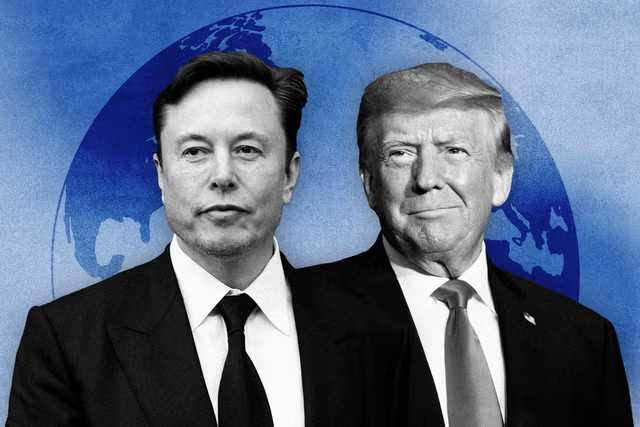Thousands of drivers are being hit with fines for “crimes” they haven’t committed. But when they investigate, they are shocked to discover that it’s because someone else is using their car’s number plate to break the law.
Cloning of cars’ registrations is becoming an epidemic, with fake plates hitting policing, counterterrorism and councils’ enforcement of schemes such as Ultra Low Emission Zones and congestion charges.
How bad is the problem?
A recent investigation by the BBC found that in 2023 there were 36,794 cases of fines being cancelled across 30 of London’s 32 boroughs because they were issued to drivers whose number plates had been cloned. That figure was up by 64 per cent from 2021.
But it’s not only a London problem: plates cloned to commit a crime in the capital can be from anywhere in the UK. Figures obtained by the RAC from the Driver Vehicle Licensing Agency (DVLA), through a Freedom of Information request, show that incidents of cloned number plates have escalated from 7,431 in 2021 to 9,850 in 2023, a 25 per cent increase.
Yet even the DVLA admits its figures aren’t representative of how bad the problem really is, saying that car owners don’t always alert it to the crime.
What is number plate cloning?
Cloning is applying the registration number of one car to another, usually identical model. The aim is to confuse Automatic Number Plate Recognition (ANPR) cameras.
Thieves may steal the physical number plate by removing it from a victim’s car. Or they may simply jot down the registration number and have a new set of plates made up for the car whose identity they want to obscure.
Why are number plates cloned?
At its most extreme, cloned number plates are put on stolen cars that look like the “donor” vehicle. That way ANPR cameras in police cars won’t pick up anything untoward with the nicked motor.
But cloners usually just want to get away with low-level crime. That might be driving in a low emissions zone without paying, or driving off without paying for fuel. Any resultant punishment will then end up with the number plate’s registered keeper.
“So much policing is done by ANPR camera now,” the RAC’s Simon Williams said. “Whether it’s cameras on no left or right turns, yellow box junctions, traffic lights, speeding and even the latest AI cameras that spot drivers on the phone or not wearing their seatbelts, they rely on reading people’s number plates.”
The use of ANPR technology is growing dramatically. The National ANPR Service says in 2024 there are about 80 million ANPR “reads” every day – nearly three times the number from six years ago.
But ANPR relies on drivers displaying the correct registration number. And if criminals use someone else’s identity, it nullifies ANPR as a tool for maintaining law and order.
Number plate company Platehunter issues replacement plates to people who have had theirs stolen. Its boss Jon Kirkbright told us last year that his company’s 300 per cent year-on-year sales increase was largely down to cloning. This year it’s a similar story.
He said: “Our sales are up again. The trouble is there’s not much the authorities can do. The DVLA appears to have washed its hands of the problem.”
What is driving the increase?
There are a couple of factors at play. Rising living costs are causing some to resort to desperate measures. “People are struggling. If they can get around paying for something like fuel, simply by swapping number plates, they will,” Kirkbright said.
There’s also London’s Ultra Low Emission Zone (ULEZ). From the end of August 2023, the Mayor of London Sadiq Khan expanded the ULEZ to cover all of Greater London. Policed by ANPR, it charges £12.50 a day to enter in non-ULEZ-compliant vehicles – below Euro 4 for petrol and below Euro 6 for diesel.
“It has resulted in drivers of a criminal disposition using cloned number plates,” the RAC’s Williams said. The stats back that up. Transport for London revealed a 69 per cent increase in ULEZ fines because of cloning in the five months after the zone’s expansion.
How are dodgy plates made?
The law states that number plates should only be made by companies registered with the DVLA. These should demand the correct vehicle documentation before creating new plates.
But Platehunter’s Kirkbright revealed: “You can legally buy machines that will make number plates and supply no end of dodgy plates to anyone who wants one. It’s too easy.”
A quick internet search revealed a UK company selling a number plate machine on eBay for £520. Other companies advertise replacement number plates over the internet to anyone who’s prepared to pay for them. These circumvent DVLA rules by being based outside the UK.
How do you know if your number plate has been cloned?
It’s clear if your car’s number plates suddenly vanish. Otherwise you may simply find a fine or notice of intended prosecution on the doormat. Whatever, the first thing to do is call the police. They should issue you with a crime number and will put a marker against that number plate on the Police National Computer. This will alert officers with ANPR that they should stop cars with your registration.
Next, call whoever has issued the ticket and explain the situation. “At this point you will have to prove your innocence, which seems a bit wrong,” said the RAC’s Williams. And there are plenty of horror stories from drivers who haven’t been believed by local authorities.
Keith Williams from Anglesey in North Wales received a parking ticket from London when he’d never driven there. He explained: “I ended up having to engage a solicitor to remove the Parking Charge Notice as the local authority wouldn’t accept what I was telling them.”
Another cloning victim, Michael Stokes from Hackney in London, said: “I would ring up whoever issued the tickets and get stuck in automated phone hell. Then when you do talk to a human, they don’t want to know and don’t believe you. The DVLA wasn’t interested either. It was like talking to robots.”
Disclaimer: The copyright of this article belongs to the original author. Reposting this article is solely for the purpose of information dissemination and does not constitute any investment advice. If there is any infringement, please contact us immediately. We will make corrections or deletions as necessary. Thank you.



